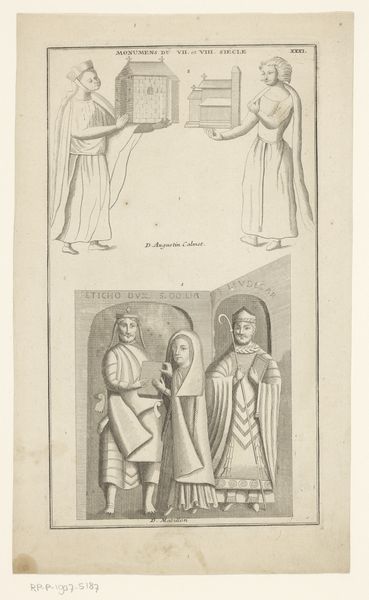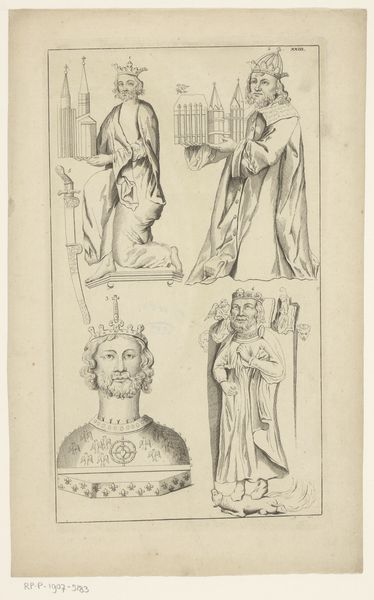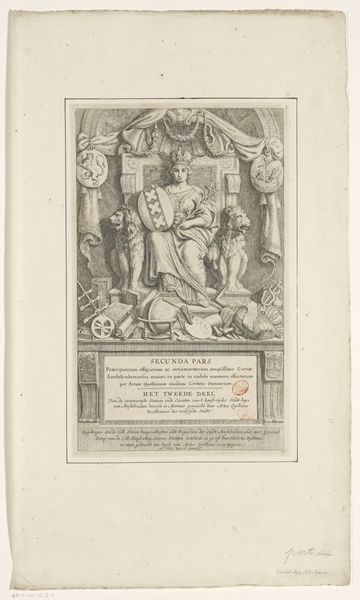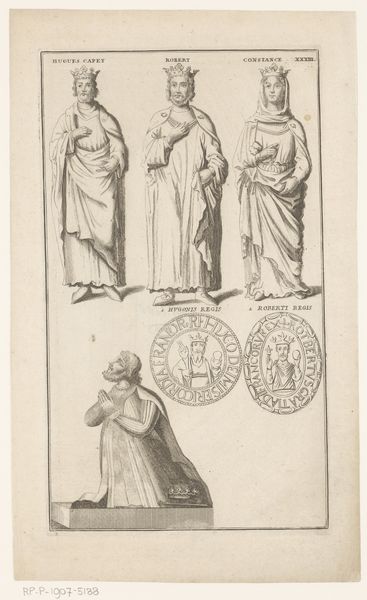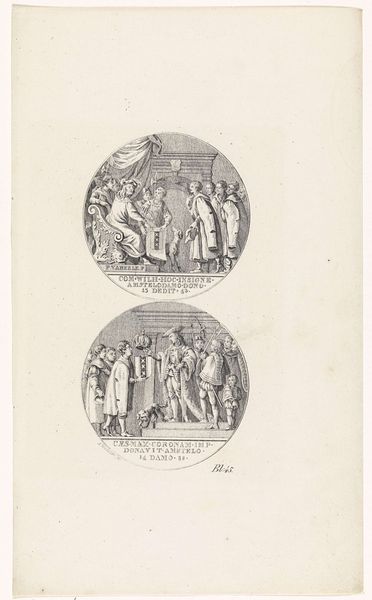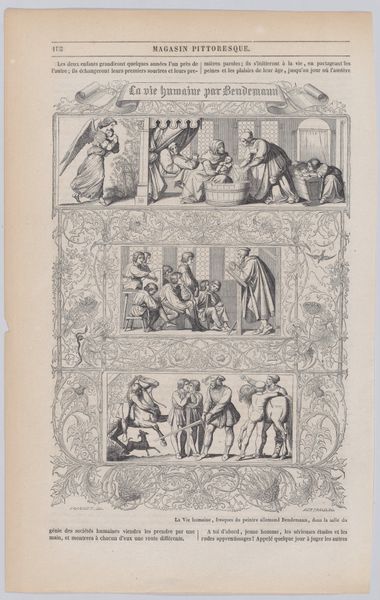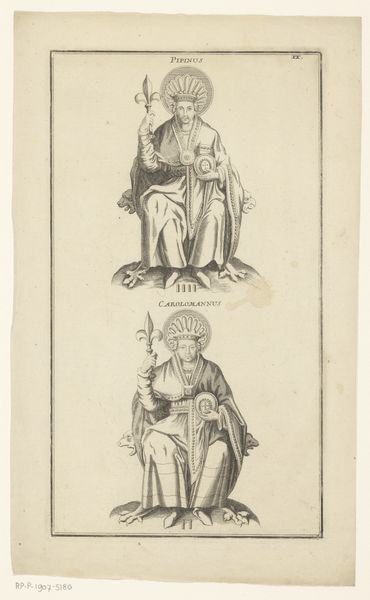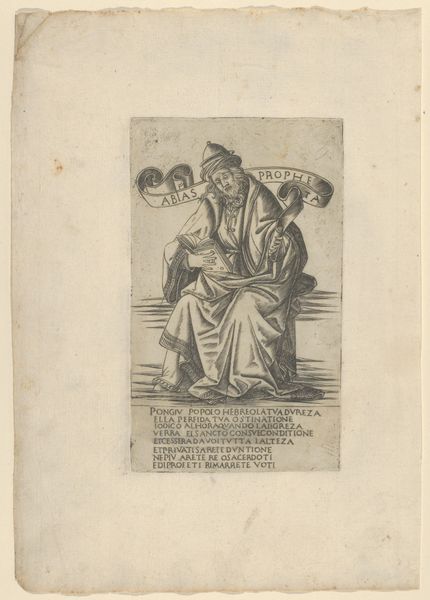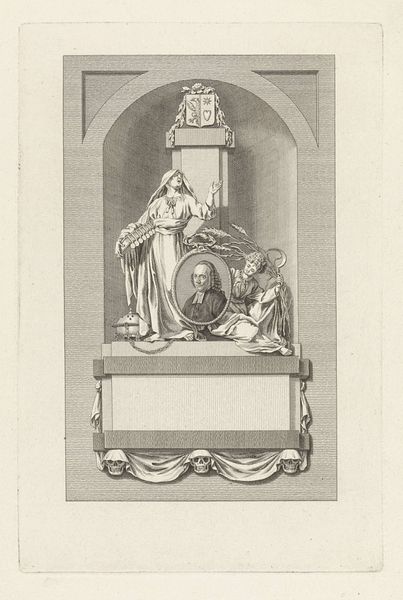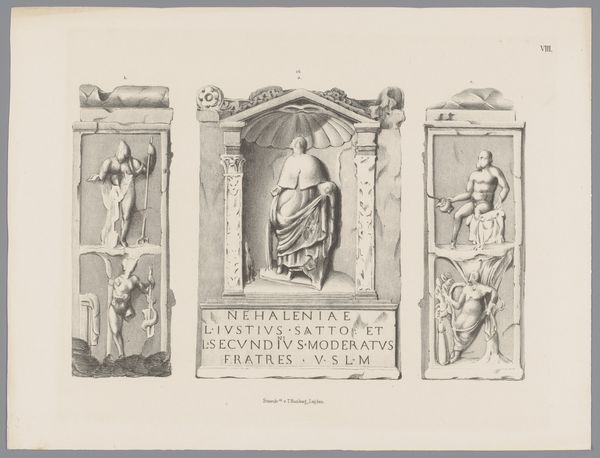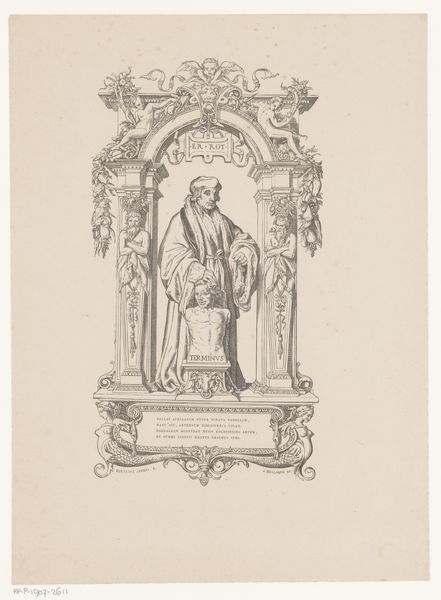
Twee scènes met keizer Karel de Grote en paus Leo III 1729 - 1733
0:00
0:00
dominiquesornique
Rijksmuseum
print, engraving
#
pencil drawn
#
baroque
# print
#
old engraving style
#
figuration
#
line
#
history-painting
#
academic-art
#
engraving
Dimensions: height 278 mm, width 121 mm
Copyright: Rijks Museum: Open Domain
Curator: This engraving from between 1729 and 1733, attributed to Dominique Sornique, depicts two scenes featuring Emperor Charlemagne and Pope Leo III. It’s held in the Rijksmuseum collection. My initial response is the starkness. The linearity almost feels austere. It evokes the visual language of record-keeping rather than celebration. Editor: Indeed, that starkness you mention resonates, especially when considering the historical implications of this imagery. This piece isn’t merely illustrative; it participates in the construction of power. Charlemagne's relationship with the papacy was crucial for legitimizing his imperial rule. Curator: I’m intrigued by the two-tiered composition. It’s almost like a before-and-after narrative frozen in time. The upper panel has the Pope elevated between two figures, then, below, we see two singular figures more isolated from each other. Editor: Exactly, and the vertical composition allows for an exploration of the relationship between secular and spiritual authority. Who kneels? Who stands? Who grants power and to whom? These power dynamics of the time were quite precarious, with both parties jostling for dominion. Consider the 'Donation of Constantine,' a forged document used to bolster papal authority – pieces such as this one contribute to that wider propaganda battle. Curator: I see your point. It also appears the artist tried to incorporate textual components directly into the scenes, framing the figures themselves, to bolster that narrative impact and reinforce the political statements in visual form. What’s compelling is how Sornique is choosing to illustrate the narrative – there’s a certain detachment, a level of formality in the visual treatment, as if wanting the scene to be more documentary and declarative than celebratory. Editor: I agree, and it emphasizes the degree to which art can subtly influence perspectives on politics and history. It pushes one to think of images less as mere reproductions and more as active participants in shaping discourse. Curator: Absolutely, I found myself caught up on how seemingly simple artistic choices—composition, figure placement, use of text—can amplify pre-existing biases and impact societal views on power and identity. Editor: And on my end, examining it through the formal elements highlights its visual echoes that were part of baroque art. Thank you for helping me appreciate the complexities in it.
Comments
No comments
Be the first to comment and join the conversation on the ultimate creative platform.
